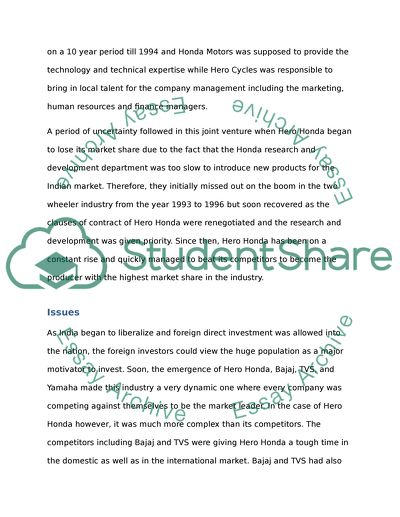Cite this document
(Hero Honda Motors Limited in Asia Term Paper Example | Topics and Well Written Essays - 2000 words, n.d.)
Hero Honda Motors Limited in Asia Term Paper Example | Topics and Well Written Essays - 2000 words. Retrieved from https://studentshare.org/marketing/1460406-international-study-case
Hero Honda Motors Limited in Asia Term Paper Example | Topics and Well Written Essays - 2000 words. Retrieved from https://studentshare.org/marketing/1460406-international-study-case
(Hero Honda Motors Limited in Asia Term Paper Example | Topics and Well Written Essays - 2000 Words)
Hero Honda Motors Limited in Asia Term Paper Example | Topics and Well Written Essays - 2000 Words. https://studentshare.org/marketing/1460406-international-study-case.
Hero Honda Motors Limited in Asia Term Paper Example | Topics and Well Written Essays - 2000 Words. https://studentshare.org/marketing/1460406-international-study-case.
“Hero Honda Motors Limited in Asia Term Paper Example | Topics and Well Written Essays - 2000 Words”, n.d. https://studentshare.org/marketing/1460406-international-study-case.


